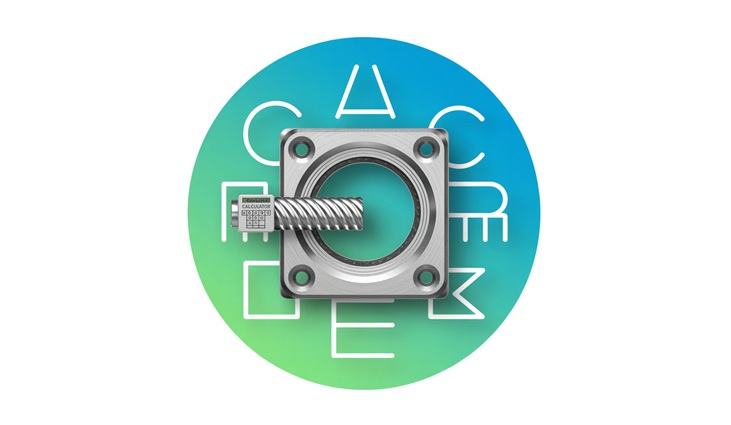Stepper Motor Calculator
Max speed & power, steps/rev, steps/mm (leadscrew & belt) — fast and clear
Maximum Speed & Power (Inductance-Limited)
Speed & Power
Max Speed
Max Speed
Max Power
Steps per Revolution (SPR)
Steps per Revolution
Steps/mm — Leadscrew
Leadscrew Steps/mm
Steps/mm — Belt & Pulley
Belt Steps/mm

Free Stepper Motor Calculator 2025: Step‑by‑Step Guide
Whether you’re tuning a 3D printer, building a CNC, or sizing a motor for an automation project, this guide shows you how to use the Stepper Calculator, the exact formulas behind each result, and realistic examples—plus tips to avoid common pitfalls.
What this stepper motor calculator estimates
- Maximum speed (rev/s and RPM) limited by inductance
- Maximum electrical power (W)
- Steps per revolution (SPR)
- Steps per millimeter (leadscrew and belt drives)
Quick start: pick the calculation you need
- Max speed & power: Enter steps/rev, Imax, inductance L (mH or H), and voltage V.
- Steps per revolution: Enter step angle in degrees.
- Steps/mm (leadscrew): Enter SPR, microstepping, and pitch (mm/rev).
- Steps/mm (belt): Enter SPR, microstepping, belt pitch (mm/tooth), and pulley teeth.
Formulas used by the Stepper Calculator
MaxSpeed = V / (2 × L × Imax × steps/rev)
RPM = MaxSpeed × 60
Maximum power (W)
Pmax = Imax × V
Steps per revolution (SPR)
SPR = 360 / StepAngle°
Steps/mm — leadscrew
Steps/mm = (SPR × microstepping) / leadscrewPitch(mm/rev)
Steps/mm — belt & pulley
Steps/mm = (SPR × microstepping) / (pulleyTeeth × beltPitch(mm/tooth))
Keep units consistent. Convert mH → H by dividing by 1,000 (e.g., 4.8 mH = 0.0048 H).
Worked examples (real‑world values)
A) Max speed & power (inductance‑limited)
- Steps/rev = 200 (1.8° motor)
- Imax = 1.5 A, L = 4.8 mH (0.0048 H), V = 24 V
- MaxSpeed = 24 / (2 × 0.0048 × 1.5 × 200) = 8.33 rev/s → 500 RPM
- Pmax = 1.5 × 24 = 36 W
B) Steps per revolution (SPR)
- Step angle = 1.8° → SPR = 360 / 1.8 = 200 steps/rev
- Step angle = 0.9° → SPR = 360 / 0.9 = 400 steps/rev
C) Steps/mm — leadscrew
- SPR = 200, microstepping = 16, leadscrew pitch = 5 mm/rev
- Steps/mm = (200 × 16) / 5 = 640 steps/mm
D) Steps/mm — belt & pulley
- SPR = 200, microstepping = 16, belt pitch = 2 mm/tooth, pulley = 20 teeth
- Steps/mm = (200 × 16) / (20 × 2) = 80 steps/mm
How to use the stepper max speed calculator effectively
- Identify your goal: speed/power, rotation resolution (SPR), or linear resolution (steps/mm).
- Gather specs: motor step angle, inductance, current, driver microstepping, and your mechanics (leadscrew pitch or belt pitch & pulley teeth).
- Enter values and calculate: The tool shows a clean breakdown for each result.
- Check units: If your datasheet lists mH, convert to H for the speed formula (divide by 1,000).
Tips, constraints, and real‑world caveats
- Torque vs speed: Even if the inductance‑limited speed looks high, usable torque drops with speed. Validate with torque‑speed curves.
- Driver & supply: Max current is limited by the driver; higher voltage typically improves high‑speed performance (within driver & motor limits).
- Microstepping: Raises resolution and smoothness but does not increase holding torque; per‑microstep torque decreases.
- Acceleration profiles: Missed steps often come from aggressive acceleration. Tune jerk/accel in firmware/CNC controller.
- Back‑EMF & wiring: Long leads add resistance/inductance; keep wiring short and use adequate gauge.
Quick reference tables
| Step angle (°) | SPR (steps/rev) |
|---|---|
| 1.8 | 200 |
| 0.9 | 400 |
| 7.5 | 48 |
| Quantity | Convert | Example |
|---|---|---|
| Inductance | mH → H | 4.8 mH ÷ 1000 = 0.0048 H |
| Speed | rev/s → RPM | 8.33 × 60 = 500 RPM |
| Leadscrew pitch | mm/rev (keep in mm) | 5 mm/rev → use 5 in formula |
FAQs
Is the max‑speed formula exact?
No. It’s a theoretical limit based on inductance. Real speed depends on driver, supply voltage, load inertia, wiring, and acceleration.
Does microstepping increase torque?
Not holding torque. It increases resolution and smoothness. Per‑microstep incremental torque is smaller.
How accurate are steps/mm results?
They’re ideal values. Real backlash, pulley tolerances, belt stretch, and microstep linearity introduce small errors—calibrate if critical.
What if my stepper is 0.9° instead of 1.8°?
SPR doubles (400 instead of 200), so steps/mm doubles at the same microstepping and mechanics.
Can I just raise voltage to get more speed?
Often yes, within driver and motor limits. Higher voltage improves current rise time at speed, but watch thermal limits and driver ratings.
Calibration checklist (if precision matters)
- Measure a commanded move (e.g., 100 mm) with calipers or an indicator.
- Compute scaling error = measured / commanded.
- Adjust steps/mm by multiplying your current value by the inverse of that error.
- Re‑test at multiple positions and speeds; average if necessary.
Use the torque speed stepper to get fast, reliable design targets: max speed and power for sizing electronics, SPR for motion granularity, and steps/mm for linear resolution. Then validate on the bench with your driver, supply, and mechanics. With sensible voltage, tuned acceleration, and calibrated steps/mm, you’ll hit the sweet spot of speed, smoothness, and accuracy.
You can explore Similar Calculator like this AP statistics score calculator.

